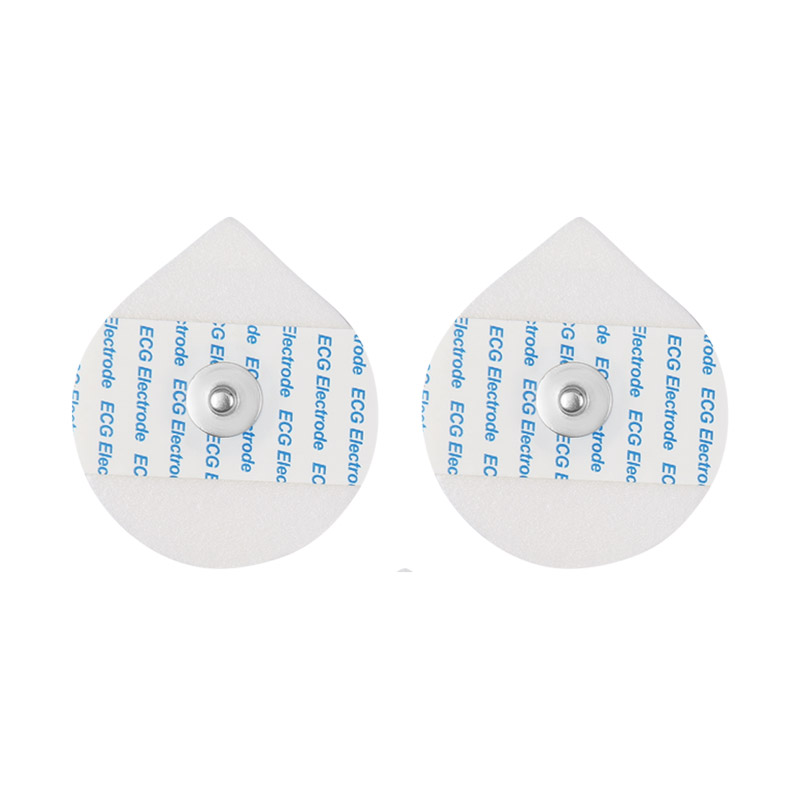Electrodes for electrocardiograms (ECGs) are essential instruments use in medicine to reveal and diagnose heart issues. The gel used to switch electric impulses from the body to the ECG machine is an important aspect that impacts their effectiveness. This article will examine the composition of the stable gel used in ECG electrodes, give an explanation for its features, assess it with other gel kinds, such as liquid gel, and communicate the way it impacts patient consolation and electrode overall performance.
Gel’s Function in ECG Electrodes
Between the pores and skin and the electrode’s metallic or carbon-based sensor, the gel in ECG electrodes acts as a conductive medium. Healthcare practitioners can report clean and straightforward ECG traces because this conductivity is important for correct sign transfer from the body to the ECG gadget.
In addition, the gel plays assisting duties which include commitment merchandising and lowering skin inflammation. Because they have an effect on patient comfort and electrode balance at some stage in tracking or trying out processes, these extra features are essential.
Solid Gel Composition in ECG Electrodes
The solid gel used in ECG electrodes is made to be very conductive and shape-retaining. Solid gel generally consists of a conductive element that enables sign transmission and a base substance that offers a stable structure, however the perfect composition would possibly vary.
Often, a flexible and lengthy-lasting polymer serves as the muse cloth. Because of its polymer nature, the gel can preserve its form without spreading or leaking and attach to the electrode. Solid gel electrodes are therefore ideal for lengthy-term monitoring and situations wherein the electrodes ought to remain in an area despite movement or perspiration because of this option.
The conductive factor, which allows the gel to successfully deliver electric impulses, is mostly an aggregate of salts or other conductive substances. These materials assure a low resistance to electricity present day, facilitating the transmission of clean alerts.
Benefits of Solid Gel for Electrodes in ECG
company gel Compared to different electrode types, particularly those that use liquid gel, ECG electrodes offer several benefits. Here are most of the fundamental favors.
Less Mess and Cleanup: Unlike liquid gel, which spills or makes a mess, strong gel maintains its structure. This characteristic lowers the opportunity for contamination and improves the ease of solid gel electrodes for medical practitioners.
Enhanced Adhesion: The stable gel’s polymer foundation has a high skin adhesion, which ensures that the electrodes will stay in location through movement and extended monitoring instances.
Improved Signal Quality: The constant composition of solid gel contributes to consistent pores and skin contact, minimizing signal artifacts from gel migration or strain variations.
Longer Shelf Life: Because stable gel electrodes are less likely to dry out or come to be infecte, they usually have an extended shelf life than liquid gel ecg electrodes.
ECG Electrode Comparison: Solid Gel vs Liquid Gel
Solid gel electrodes offer clear benefits, however, it’s critical to understand how they fluctuate from liquid gel electrodes, which are additionally often used for ECG tracking.
Application and Removal: In trendy, it is less complicated to use and do away with strong gel electrodes. They hold their shape, making implantation less complicated and lowering the opportunity for gel spreading. In comparison, liquid gel electrodes want to be handle with extra caution to keep away from spills or spreading.
Comfort: Since solid gel electrodes offer a more even floor, sufferers can also experience extra relaxation for the duration of extended tracking. Because the liquid gel is fluid and can leak or flow, it can from time to time be uncomfortable.
Signal Quality: When utilized properly, each sort of electrode might also provide signals of an excessive caliber. But due to the fact the gel does no longer pass or dry up as fast as liquid gel, solid gel electrodes are much less in all likelihood to enjoy signal loss over the years.
Use Cases: Solid gel electrodes are encouraged for longer-time period monitoring, strain checking out, and instances of annoying high balance, while liquid gel electrodes are regularly applied for unmarried-use packages or shorter-term tracking.
Ensuring Solid Gel ECG Electrodes Are Use Correctly
Applying and keeping stable ecg electrode gel efficiently is vital to maximizing their favors. Here are a few guidelines for making efficient use of those electrodes:
Skin Preparation: Before setting the electrodes, easily dry the skin. Oils and grime that could have an effect on adhesion and sign pleasantness are eliminate at this level.
Placement: Arrange the electrodes by the encouraged ECG methods. Even though stable gel electrodes are meant to stay in place, the right positioning remains vital to get reliable readings.
Secure Attachment: To avoid motion at some point of tracking, make sure the electrodes are firmly affixed to the skin. This stability is specifically vital at the same time as working out or taking strain assessments.
Storage: To amplify the life of strong gel electrodes, maintain them somewhere dry and cold. Steer clear of extraordinarily hot or bloodless situations in view that those may additionally regulate the gel’s traits.
Present Developments in Solid Gel Electrode Technology for ECG
Many advancements have been made in the realm of ECG electrode technology recently, especially with solid gel. To minimize the possibility of skin irritation and improve patient comfort and signal quality, manufacturers are concentrating on making improvements to the electrodes’ composition and design.
The creation of solid gel electrodes that are more flexible and thinner is one trend. With long-term monitoring requiring patients to wear electrodes for prolonged periods, these improvements seek to offer a more comfortable fit. Additionally, thinner electrodes may be less noticeable to patients since they are simpler to hide beneath clothing.
Eco-friendly design is another trend. solid gel ecg electrodes made of recyclable or biodegradable materials are being developed as healthcare adopts more environmentally friendly procedures. This change is in line with more general healthcare sustainability objectives while also lessening the impact on the environment.
Conclusion
firm gel Electrocardiogram (ECG) electrodes are an essential part of current cardiac tracking and prognosis. Their distinct makeup creates a conductive, solid medium that has many benefits over other styles of electrodes, such as liquid gel. Healthcare practitioners may guarantee accurate and dependable ECG monitoring at the same time as reducing aches and optimizing electrode stability with the aid of understanding the features of gel in ECG electrodes and the blessings of stable gel.


